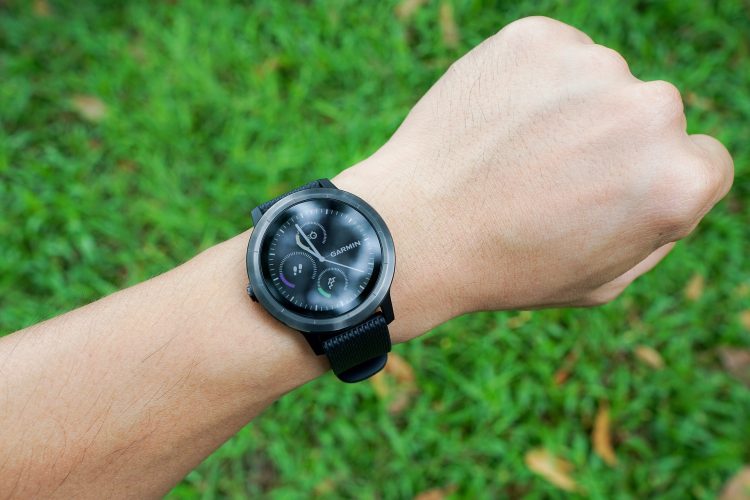In recent years, smartwatches have evolved from mere tech gadgets to essential daily companions. They serve multiple purposes, from tracking fitness goals and managing notifications to even assisting in health monitoring. But with so many options flooding the market, choosing the best smartwatch can be overwhelming. This guide provides a clear breakdown of essential factors to help you make the best decision for your needs.
1. Compatibility
One of the first things to consider when purchasing a smartwatch is compatibility with your smartphone. Not all smartwatches work with every phone. For example:
- Apple Watch: Only compatible with iPhones. While it’s one of the best smartwatches in the market, it’s not suitable for Android users.
- Wear OS Watches: These run Google’s Wear OS and work with both Android and iOS devices. However, some features may be limited when paired with an iPhone.
- Samsung Galaxy Watches: While compatible with both iOS and Android, they work best with Samsung phones, offering more extensive features and better integration.
2. Features and Functionality
The feature set of a smartwatch determines its usefulness. Here’s a breakdown of key features to look for:
- Health and Fitness Tracking: Almost all smartwatches offer basic fitness tracking such as step count, calories burned, and heart rate monitoring. Advanced features include:
- ECG monitoring: Found in high-end watches like the Apple Watch and Samsung Galaxy Watch, it can detect irregular heartbeats.
- SpO2 monitoring: This measures blood oxygen levels, useful for tracking sleep quality and overall fitness.
- Sleep tracking: Helps monitor sleep cycles and quality, providing valuable insights into your sleep patterns.
- Notifications: Smartwatches allow you to receive and interact with notifications such as calls, texts, emails, and app alerts. Some offer quick reply options, while others allow for more complex interactions.
- GPS and Connectivity: If you’re into outdoor activities or workouts, built-in GPS is essential. It lets you track routes, distance, and pace without needing to carry your phone. Additionally, cellular connectivity (LTE) allows you to make calls and use apps without being tethered to your phone.
- Payment Support: Many smartwatches offer mobile payment options like Apple Pay, Google Pay, or Samsung Pay. If you frequently use contactless payments, this feature could be a game-changer.
- App Ecosystem: The more developed the app ecosystem, the more functionality your smartwatch will have. Apple’s watchOS has a vast library of apps, while Google’s Wear OS and Samsung’s Tizen are growing but still lag behind in app variety.
3. Battery Life
Battery life is one of the most important aspects of a smartwatch, particularly if you use it heavily for fitness tracking or GPS. Battery life varies significantly across different models:
- Apple Watch: Generally lasts around 18-24 hours, which means daily charging.
- Samsung Galaxy Watch: Can last 2-3 days on a single charge, depending on usage.
- Fitbit and Garmin: Focus on fitness tracking and can last up to a week or more, making them ideal for users who prioritize battery life.
If you plan on using your smartwatch for extended periods without access to a charger, choose one with a long battery life or at least a power-saving mode.
4. Design and Build Quality
A smartwatch is as much a fashion accessory as it is a tech gadget. When considering design, you’ll want a watch that fits your personal style and feels comfortable to wear daily. Factors to look at include:
- Shape and Size: Watches come in different sizes to suit various wrist sizes. Most brands offer different versions to accommodate both men and women.
- Build Materials: Smartwatches can come in aluminum, stainless steel, titanium, or plastic. Higher-end materials like stainless steel and titanium are more durable but also more expensive. Some watches even offer sapphire crystal displays for added scratch resistance.
- Interchangeable Straps: A key feature for customization, many smartwatches offer interchangeable straps, allowing you to switch between sporty, formal, or casual looks.
5. Water Resistance
If you’re planning to use your smartwatch for swimming or in rainy conditions, check its water resistance rating. Most modern smartwatches are at least IP68 rated, meaning they can withstand dust and water immersion. For swimming, look for a watch with at least a 5 ATM (50 meters) water resistance rating.
6. Price Range
Smartwatches come in a wide price range, from budget-friendly models to premium options costing several hundred dollars. Here’s a general breakdown:
- Budget (<$150): Often includes basic fitness tracking and limited smart features. Examples include the Fitbit Versa Lite and Amazfit Bip.
- Mid-Range ($150-$300): You’ll find watches with more robust fitness tracking, GPS, and better design, such as the Fitbit Versa 3, Garmin Forerunner 45, or Samsung Galaxy Watch Active.
- Premium ($300+): High-end smartwatches like the Apple Watch Series 8, Samsung Galaxy Watch 6, and Garmin Fenix offer advanced features, premium materials, and better app ecosystems.
7. Brand Reputation and Support
Choosing a well-established brand with reliable customer support is crucial. Companies like Apple, Samsung, Garmin, and Fitbit have solid reputations for quality and offer good after-sales service, including software updates and customer support. Lesser-known brands may offer cheaper alternatives but could lack software support or warranties.
8. Ecosystem Integration
If you’re already invested in an ecosystem—whether it’s Apple, Google, or Samsung—buying a smartwatch from the same brand can offer seamless integration. For example:
- Apple Watch integrates perfectly with the iPhone, offering features like Handoff and Apple Health.
- Samsung Galaxy Watch pairs well with Samsung smartphones, offering Samsung-specific features like Samsung Health and Bixby.
- Wear OS watches work across a range of Android devices, and if you’re a Google ecosystem user, you’ll enjoy Google Assistant integration and Google Fit sync.
Final Thoughts
The best smartwatch for you depends on your individual needs and lifestyle. Consider what features matter most, whether it’s fitness tracking, notifications, battery life, or design. By carefully analyzing the factors mentioned above—compatibility, features, battery life, design, price, and brand reputation—you can make a well-informed choice that aligns with your lifestyle.
With the smartwatch market constantly evolving, it’s worth keeping an eye on the latest models and updates. Whether you’re looking for something to assist with fitness, manage your schedule, or simply act as a stylish accessory, there’s a smartwatch out there tailored just for you.


